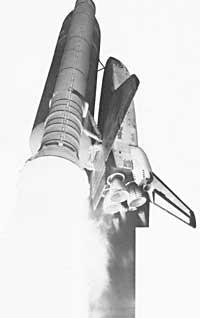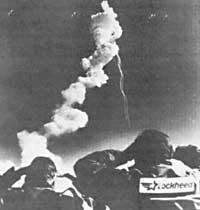Solid fuel responsible for the launcher explosion?

The incredible images of the Challenger launcher explosion touched us in depth. If in the last thirty years it has turned us into a routine, this trajedia reminds us that we are facing a dangerous obligation.
Fourteen seconds before the Challenger explosion, one of the solid fuel rocket engines had a live flame. The flame began at the bottom of the rocket, near the point where the launcher is attached to the fuel tank. Many experts believe that there has been a mistake in treating solid fuel.
Throughout the launcher's mission, each of the two propeller rockets gives a push of 1.5 million kilograms to put the ship into orbit. In this mission, the twenty-fifth, the propellers and engines of the Challenger itself had to place in space the heaviest load ever placed.

If the mission had been successful, the engines were running for two minutes and ten seconds. Then the mission commander would have charged him. 150 Km/h that would have fallen to the sea. The impact damages the extreme cover and navigation systems, but the steel segments of the fuselage persist. These are recovered and reused.
Despite the problems caused by solid fuel propulsion, NASA preferred from the very beginning of the launcher project instead of liquid fuels, in 1972. One of the criticisms that was made was that solid fuel rockets cannot be switched off after being switched on (it is possible with liquid fuel rockets). In fact, the development of a solid fuel booster was more economical.

The propellers weigh 46 meters high, 3 wide and 590.000 kilos. It consists of four main segments. In this last Challenger mission one of the segments was new, the other was old. On the head of the segments is the "nose", where the navigation system and ignitor are located. At the bottom there is exhaust of rocket gases.
The composition of solid fuel is as follows: 16% aluminum powder, 69.83% ammonium tetraoxochlorate (VIII), 0.17% iron oxide (III) and 14% curing agent. This mixture accounts for approximately 90% of the weight of the propeller and is poured as liquid into the segments. It solidifies by applying a caustic solid. The fuel solidifies in ring as there is an empty cylinder in the center of segments. The fire lights up in the center and spreads out. After turning on the head, the fire spreads rapidly down.

Rooted in existing evidence, the source of the Challenger disaster is believed to be in fuel. The flames observed for fourteen seconds give the basis for this.
These flames, located at 3000°C, had to burn an insulator/inhibitor layer that protects the steel fuselage inside to go outside. They usually reach this material when almost all the fuel is burned. If there were fuel defects, such as bubbles or cracks, the flames reached the insulation/inhibitor layer earlier. This layer, however, is not designed to withstand high temperatures for long periods of time. This weak point was possibly close to the union between the two segments.
For fourteen seconds these flames were heating the liquid fuel tank. A hole was opened and the hydrogen that was inside came into contact with the flames. And we all know the behavior of hydrogen before fire... Remember what happened to the Zepelina "Hinderburg" of 1936.





